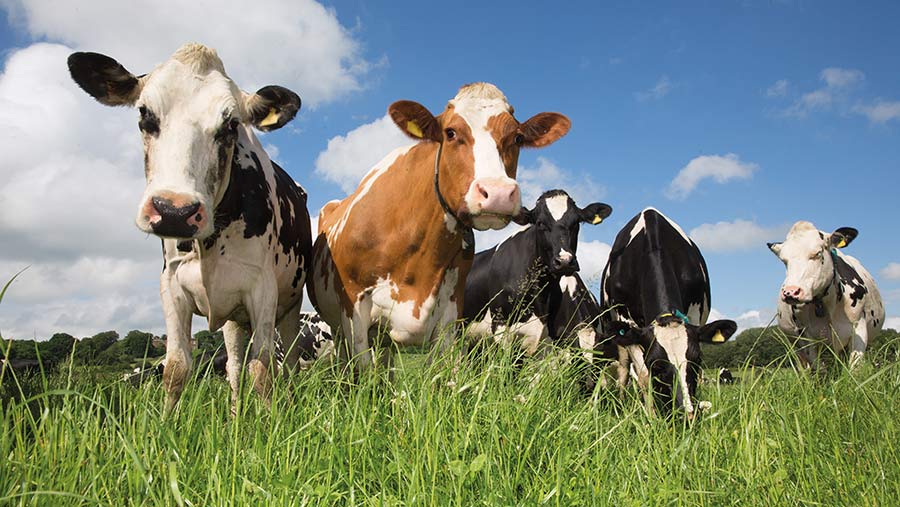Arla reveals carbon output of its dairy farmers
 © Tim Scrivener
© Tim Scrivener Dairy co-operative Arla has revealed carbon footprint data from just under 2,000 of its UK dairy farmers, suggesting they are world-beaters in terms of their environmental impact.
In a new report, A sustainable future for British dairy, the company maps the carbon footprint of its raw milk, as well as the source of greenhouse gas emissions on-farm, using analysis of 1,964 of its UK farmers.
See also: Ways to reduce dairy greenhouse gas emissions to hit targets
The results show that the farmers’ raw milk is produced with emissions of 1.13kg/litre of carbon dioxide equivalent, which is about half the global average and less than the UK average of 1.25kg/litre.
Arla has set a target of reducing its farm emissions by 30% by 2030, to keep in line with the Paris Agreement on climate change.
The report says there is an opportunity to reduce emissions from feed, which was the biggest emission source on-farm, along with cow digestion.
Managing the protein level in feed rations could reduce unnecessary greenhouse gas emissions of methane and nitrous oxide being released.
Precision slurry spreading could cut airborne emissions of ammonia by between 30% and 90%, the report says. But the cost of the equipment can be substantial, ranging between £15,000 and £40,000.
Alice Swift, director of agriculture at Arla Foods UK, said the first year’s data submitted by its farmers was the starting point to help them make farm management decisions to reduce emissions.
“This is all about how we help our farmers understand the topic. All the farmers who participated know where they are starting from. They’ve got their carbon footprint, which allows them to manage and measure it,” said Ms Swift.
Arla’s climate check tool follows the International Dairy Federation guidelines on carbon footprint methodology, while emissions from animals, manure and soils are based on the Intergovernmental Panel on Climate Change data.
Emissions analysis
Analysis of the data from the 1,964 farmers shows that emissions come from six key areas on farm: cow digestion (46%); cow feed – depending on where and how it is produced – (37%); manure handling (9%); energy production and usage (5%); emissions from peat soils (1%); and other areas grouped together (2%).
The data was validated by external consultants.
The report stresses that farm management has the greatest effect on climate impact, rather than farm system, and the farmers who balance their resources successfully create the lowest amount of greenhouse gas emissions.
“While the data shows there are common themes in the emissions across all farms, every farmer has to account differently for a range of factors, largely determined by UK location,” says the report.
“Geography has significant impacts on climate and soil type which, in turn, impact the type of feed and farming systems they are able to implement.”
Climate solutions
Di Wastenage, vice-chairman of the Royal Association of British Dairy Farmers, said: “What makes this report stand out and why we welcome it is because it has the data to back up the impact changes on-farm are having on the environment, and we are grateful to Arla for taking the lead.
“We all need to embrace change to protect the reputation of our dairy products and our brand integrity.
“We recognise that change will be needed on some farms to meet emissions targets, which will be a learning curve.
“However, as an industry, we are all in it together and the data in this document highlights the positive impact change can have and how we are a solution to helping reach emissions targets rather than a problem.”
Arla said it was supporting research to provide greater clarity around the difference in impact of methane vs carbon dioxide due to their lifespans, and that further consideration is needed to the cycles of biogenic methane and how these are accounted for.
